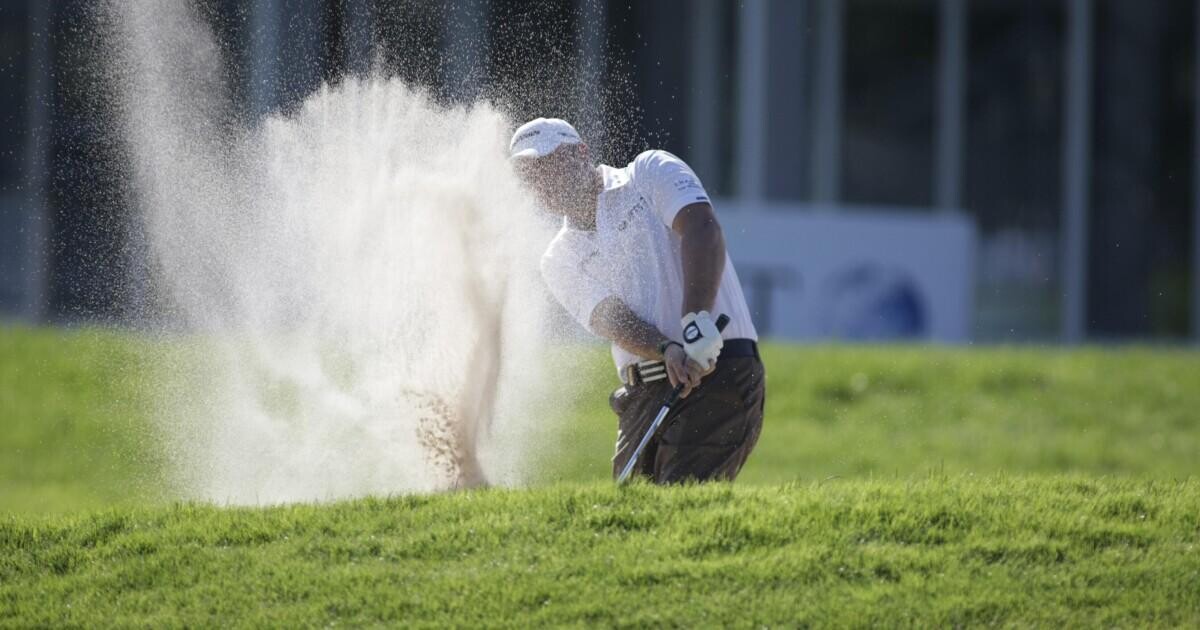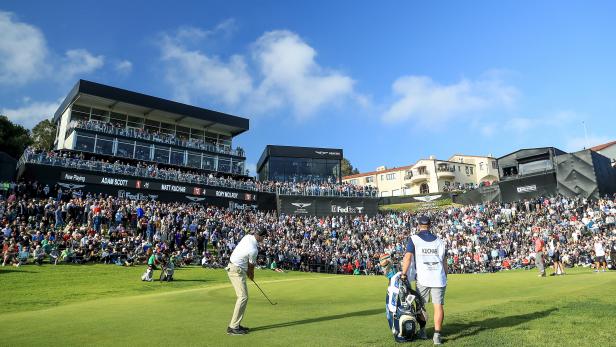Smart Golf Bets Tournament Sheets
Example 2 – Golf Tournament. This is a list of golf prop bets that were available on a UK based sportsbook for a golf tournament. As you can see, it again does not classify the prop bets, but just lists them like all of the other regular bets offered. These may all look like fun prop bets at first, but there are actually a few skill based prop. Thus, to be a profitable golf bettor one needs to be aware of smart bets versus sucker bets. Here are our five best tips and strategies to use when betting on golf. Avoid First-Round Leader Bets. The favorites to win a tournament can typically be found at odds of +800 to +1500. Compete against other bettors or simply test a betting strategy by playing our free contests. Weekly, monthly and season long prizes for each contest. Start a private pool or play against yourself in our Streak Survivor contest for a chance to win $100,000 by selecting 25 correct picks in a row. Payoffs for $2 Win Bets. Since most tracks have a $2 minimum bet, below is a handy chart to look up the payoff for a $2 bet at various odds. Remember, your actual payoff may differ from this chart, as the odds on the tote board are rounded off, so 2-1 odds on the tote board may actually be 1.9-1 or 2.2-1. VEGAS EXPERT PICKS, FANTASY TOOLS, COMPUTER SIMS, AND MORE! MONTH JOIN NOW quarterly $24.99. 1st QUARTER (renews at $24.99) LIMITED TIME: $15 off first quarter with promo code MARCHJOIN NOW.
- Smart Golf Bets Tournament Sheets Free
- Smart Golf Bets Tournament Sheets Printable
- Smart Golf Bets Tournament Sheets 2019
- Smart Golf Bets Tournament Sheets 2020
Throughout the course of the year, whenever I bring up picks for a “One and Done” contest, I’m always hit with one of two of the same questions.

Smart Golf Bets Tournament Sheets Free
- What is “One and Done”?
- How can I play “One and Done”?
While there are myriad variations on the “One and Done” format, in its most simplistic form, it’s about as basic at it gets. You select one golfer per tournament; once you select that golfer, they cannot be used again. Your team earns the same amount of money as the golfer you selected in that event and whoever has the most total money at the end of the season wins the top prize. It’s akin to an NFL survivor pool, except you are never in fear of being eliminated with a bad pick. It’s about as basic as it gets.
Subscribe to The PME Podcast: Video Apple Spotify Stitcher Stats/Tools
The beauty rests in the difficulty — it’s tough to pick winners when you must narrow your selection down to a single golfer per event. If you used Dustin Johnson at The Northern Trust in 2020, your team would have netted a cool $1.7M. Had you have used Johnson at The Memorial Tournament, you would have left holding the bag with a big, fat zero for your squad. In this format of game, timing is everything. Which makes it accessible for both seasoned players and newbies alike. It levels the playing field.
As for how to get in on a league like this, you best be looking at the beginning of the year. One-and-Done leagues typically start sometime in January and run through the remainder of the PGA season. This year’s massive One-and-Done formatted league is being hosted by SportsHub, branded the Fantasy Golf Championships. Spread across 31 events in 2021, starting at the Sony Open (January 14), you can enter up to five times at $100 per entry. Everyone will compete for the $30,000 top prize and $300,000 in the prize pool.
There is no one strategy to trump them all as it pertains to “One and Done,” but there are a few things to consider before making picks. And it’s the same as every single other sports contest ever created: Know the rules.

Competing in the giant Main Event against over 3,000 other entries is a lot different than trying to win a league against six of your friends. The fewer the entries, the more forgiving the error. It’s a lot like playing a lineup on DraftKings. The strategy behind winning a single-entry tournament that only has 200 other entries is a lot different than how you think about navigating a field of 175,000 lineups when other people can submit up to 150 rosters. That said, there are basic rules of thumbs.
Just use good players. Seems obvious, I gather that, but anyone who routinely wagers on golf can tell you how often the +10000 long shot actually ends up hoisting a novelty check come Sunday afternoon. Since a “One and Done” tournament is all based around picking winners, don’t be scared to stick to a plan and simply choose the best talent.
This is more difficult to do than you’d think. Everyone wants to be a genius so they can showcase how smart they are to the world. I’m as guilty of this as anyone. In last year’s one and done I used Russell Knox in the second tournament of the season. My gut said Knox would be able to compete in a weaker field at the American Express, and my research gave me the statistical and course backing that that it was a smart pick. Spoiler: It wasn’t.
Knox was fine that week. He made the cut and bagged $29,815 for himself and my team at PGA West. Based on the amount of total money it takes to finish in the money in a season-long “One and Done,” $29,815 may as well be zero. Now, you’re going to have bad finishes many times throughout the course of the year. Even that week, you could have selected Paul Casey, who was the third-favorite by the betting odds (+2200) and only banked $63,399. Better than Knox, but not significant in the grand scope of the season. Plus, then you never got to use Casey again.
It didn’t matter, though. The part I didn’t think through was the number of times I’d actually have to pick a player. In this year’s contest, there are 31 events that count toward the “One and Done.” Although it seems like it, you actually will never run out of good players to choose. So what if I burned Casey, I never should have been using Knox in the first place. If there are only 31 picks to make, why am taking the 225th-ranked player in the world? Because I wanted to be sneaky and find a winner no one else had and vault myself up the standings. Instead i just fell further behind by choosing the player who was the 32nd-favorite (per the betting odds) to win that week.

ThaIt’s not to say you should never take a chance. Andrew Landry won that week, and he was +20000 before the event started, one of the biggest longshot winners of the year. The problem with players from that range is that there are so many of them. It’s not like Landry was one of two +20000 players in the field. He was 60 or so players valued at +20000 or higher. So you not only had to pray it was a tournament where a long shot won, but you also had to pick the needle in the haystack among the long shots.
Smart Golf Bets Tournament Sheets Printable
There is no one optimal strategy for a league like this, but the most success I’ve had in years of playing “One and Done” is pretty basic. Try not use a player outside the top 60 in the world rankings (unfortunately, that likely won’t be possible in weaker-field tournaments), and try to take one of the least popular options inside the top-five or top-10 in betting odds of that week. That way you always guarantee yourself a quality golfer for the week, and if you zig slightly where others zag, if your golfer wins, you’ll still create a large chasm in the overall standings. And this way, you can actually select golfers who have a higher than 0.05% chance of winning before the event actually begins.

There are always exceptions to this. For example, if you’re $5M behind the leader by the time The Masters comes around, well, then you need to start swinging for the fences with every pick and hope no one else takes that golfer. That’s the only path to recovery. Hopefully, you won’t find yourself in that situation because of sensible selections to begin the year.
Smart Golf Bets Tournament Sheets 2019
Also, it never hurts to plan in advance. Obviously, the Majors, PLAYERS and WGCs have a larger purse than most other events, so saving the truly elite players for those tournaments makes a lot of sense, but don’t let it hamstring you into saving too many of the top end talent. $1.2M in earnings counts the same at every event, and frankly, the Bryson DeChambeau’s of the world are far more likely to win a weaker field event like the Rocket Mortgage Classic than one with all 50 of the world’s best players lurking around the grounds.
The single biggest mistake that is made every year in the One and Done is not using the full complement of elite players. Sure, you want to save Rory McIlory for the PGA Championship, and by all means, go for it — he should be a great play that week at Kiawah Island — but don’t paint yourself into a corner where there are six events remaining and you have 12 of the 20 best players in the world at your disposal. You would have been better off using all of them at some point over the Russell Knox types. Make certain to maximize starts from your studs. And if you’re mapping everything out in January about who you’re going to select in August, remember, there’s always the Russell Henley, Harris English, Billy Horschel and Chris Kirks who emerge as legit talents by the time the FedEx Cup Playoffs begin. So you’re never actually out of viable options.
There’s also one extra strategy that has provided massive dividends for players in the past. Tune into the Pat Mayo Experience every week, listen to the picks, do the opposite of those picks, and print money.
Smart Golf Bets Tournament Sheets 2020
Pat Mayo is an award-winning video host and producer of long and short-form content, the host of The Pat Mayo Experience daily talk show, and contributor at DraftKings. (Subscribe for video or audio). Mayo (@ThePME) won the 2020 Fantasy Sports Writing Association Daily Fantasy Writer of the Year and Golf Writer of the Year awards, along with the Fantasy Sports Trade Association Best Sports Betting Analyst of the Year award, and was a finalist for four FSWA Awards in 2020 (Best Podcast, Best Video, Daily Fantasy Writer of the Year, Golf Writer of the Year). His 21 FSWA nominations lead all writers this decade and are third-most all-time.